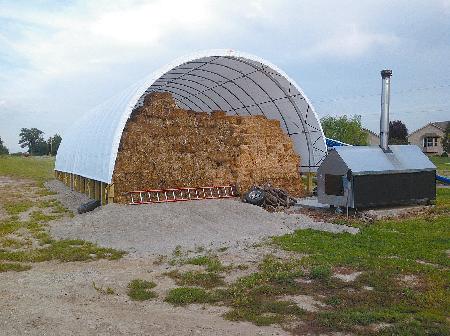They Burn Grass To Heat Workshop

Adlai Schetter and his dad heat their workshop with grass, burning small square bales of various biomass crops. The high school FFA member encouraged his dad to put tropical maize and miscanthus to work as fuel.
"The biggest problem is getting the grass to the stove," says Schetter.
"Growing up on a row crop farm, I have new respect for anyone with livestock who feeds small square bales daily."
The Schetters built a 60 by 90-ft. workshop and installed the PEX in-floor heat with the help of a family friend. Under his guidance, Adlai designed and installed the manifold, hooking it up to a Log Boss wood-fired boiler.
"One of our neighbors has a baler, and he bales the grasses, and I move them,"says Schetter. "We burned about 1,000 bales a month last year."
Gary Letterly, extension educator at the University of Illinois, has advised the Schetters. "If you burn premium wood pellets, it will run about 1 percent or less ash,? he explains. "Grasses will run 3 1/2 to 5 percent ash. When propane was $4, burning grass looked good. Now it's not as good, but it is renewable."
Miscanthus and tropical maize are baled after they have dried down. In the case of the miscanthus, harvest is delayed until the leaves have fallen off and rains have leached out problem components.
"When you burn miscanthus, it is like burning little twigs," says Letterly. "It burns fairly hot and clean."
Schetter points out that because of the higher ash content, grasses need to be burned at a higher temperature than wood and with more air. "We turn the thermostat on the boiler up to 325 degrees and add air to burn the grass," he says.
Schetter likes the dual-purpose nature of the tropical maize. High in sugar content, the bales can be fed to cattle if not needed for heat. The crop can also be grazed.
Schetter credits Letterly and a grant from The Dudley Schmidt Initiative as helping them develop the bioenergy portion of the project.
